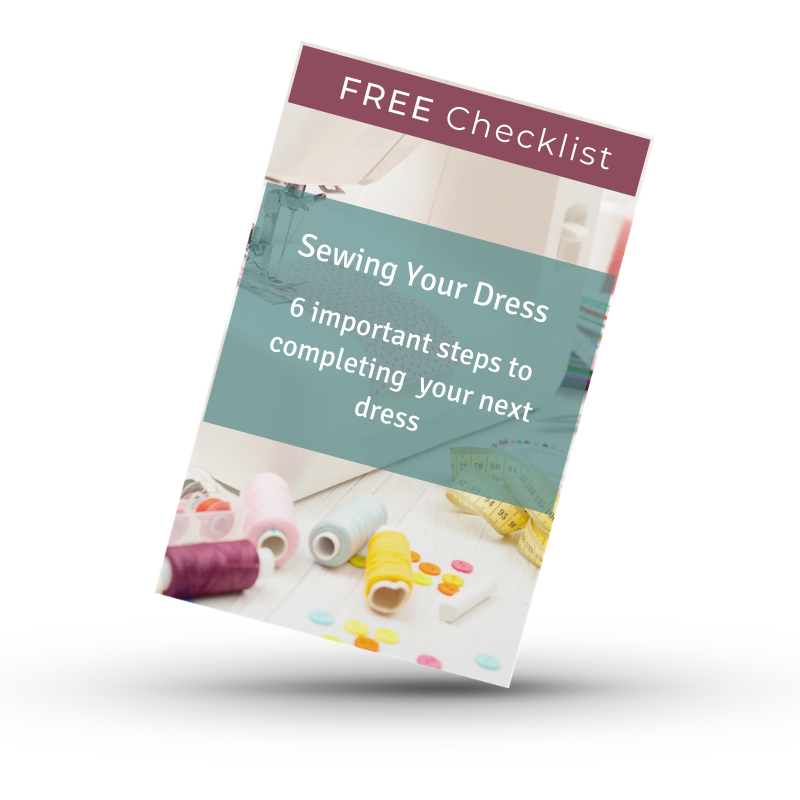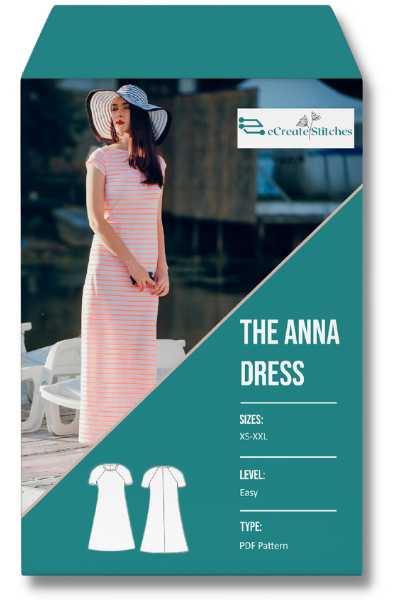Learning how to sew a seam evenly and consistently takes practice and patience. And when I was learning to sew I thought I didn’t have time for practice!
How much do you like practicing? If you’re like me, you want to skip any practicing and just get on with the “show”.
And if you want to create something well-made, it’s worth the time to practice sewing a good seam. For example, if you want to sew a dress that fits and stays together, doing some practicing ahead will help get that beautiful dress completed!
Trust me, I’ve learned the hard way! 🙄
I would get so frustrated! My dress just wasn’t turning out! It really didn’t look very good. I was rather embarrassed to wear it! That dress didn’t get worn much.
So, take your time, do a bit of practicing, and you’ll be good to go! 😊
Sew a seam: Preparing your fabric
Let’s get started. Just take some scraps of fabric, square the edges off and practice sewing some seams.

Take two pieces of fabric and place right sides together. Line up the edges perfectly…

and pin placing the pins about 2 inches apart.

The blog Pinning fabric: better seams talks more about pinning.
Now set your machine a straight stitch. Set the stitch length to 2.5mm. This is a standard stitch length and makes a nice strong seam.
Sewing the seam
Now you’re ready to sew!

Place the fabric under the presser foot with the fabric just past the needle and lower the presser foot.

Turn the handwheel on the side of the machine towards you

to bring the needle down through the fabric.

Place both hands on the fabric like this. This helps you keep control of the fabric to make an even seam.
Press carefully on the foot peddle and slowly begin stitching.

Stitch 3 or 4 stitches, press the backstitch button and backstitch 3 or 4 stitches. This locks the end of the seam in place and prevents the stitches from coming out.

As you sew, keep your eye on the seam allowance line and keep the edge of the fabric along that line.
Sewing over pins isn’t a good idea. I do it at times and end up with bent pins or broken needles. So stop and pull them out before you do that!
Stop sewing just before you get to the edge of the fabric. When you get close to the end, backstitch 3 or 4 stitches again. Lift the presser foot. Pull the fabric away from under the presser foot allowing the thread to pull out a couple of inches.

Snip the threads close to the edge of the fabric at both ends.
Ta da! The seam is finished!
Seam allowances
A seam allowance is the space between the edge of the fabric and the stitching line.
For your test sewing pieces just choose a seam allowance to use and follow any seam width you like, being careful to keep the edge of the fabric right along the line.
Check the pattern instructions before starting on a project. They indicate the required seam allowance.
Following the seam allowances carefully is very important to the outcome of your dress or project.
For instance, if you sew using a seam allowance too wide your dress will turn out too small. And if you sew using a seam allowance too narrow your dress may turn out too large.
I’ll give you a few examples.

The seam on the left has a nice even seam allowance. The seam on the right does not have an even seam allowance, plus there is no backstitching. We need more practice!

This seam you can see that the fabric is not lined up evenly, the seam allowance is not straight, and there is no backstitching. More practice needed!
Again, sew several test pieces until you feel confident with sewing and your seams are even and consistent.
It won’t take long! 😊
After that, you are ready to start on your project! Happy sewing!
What is your biggest challenge with sewing straight seams?
Let me know in the comments below!









